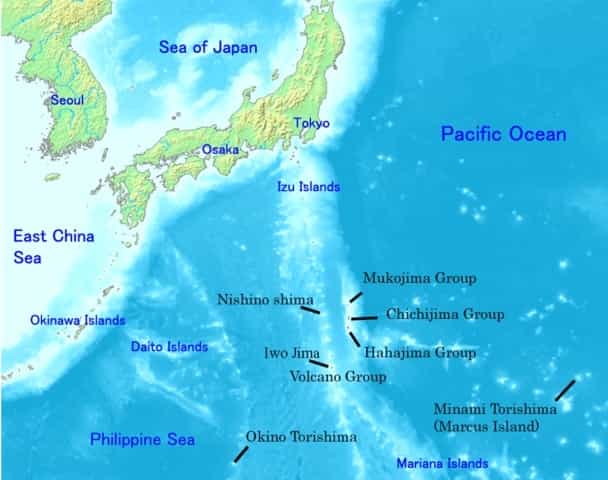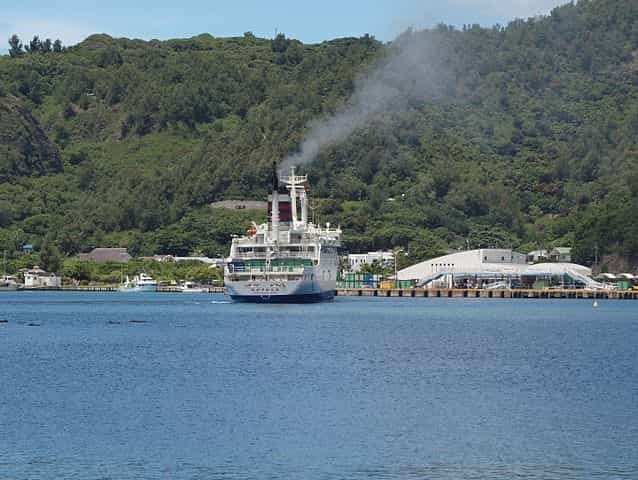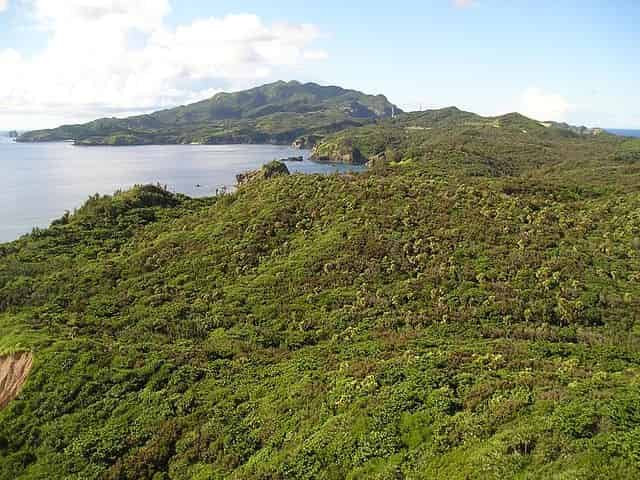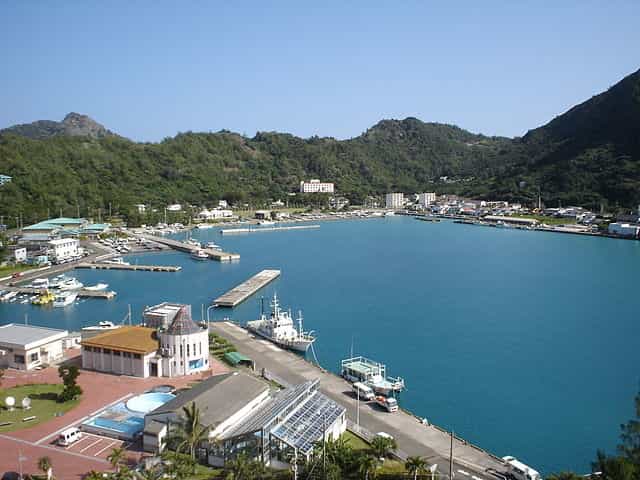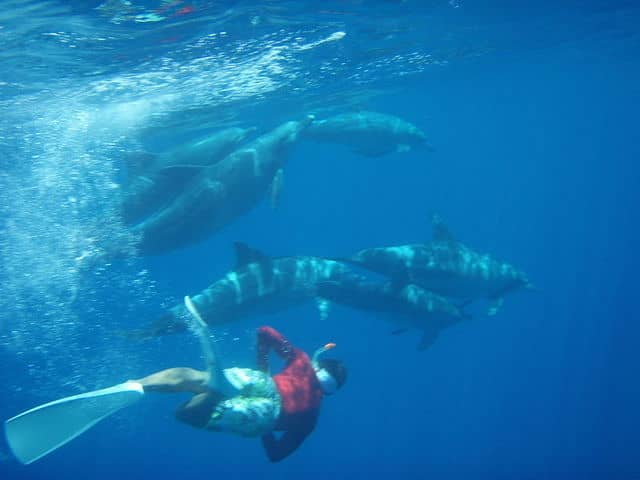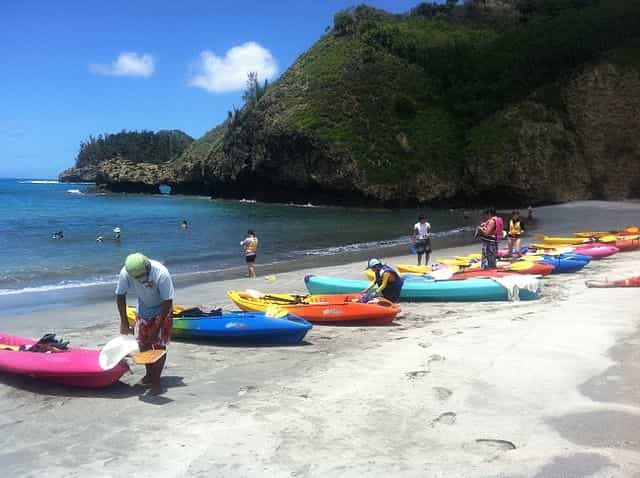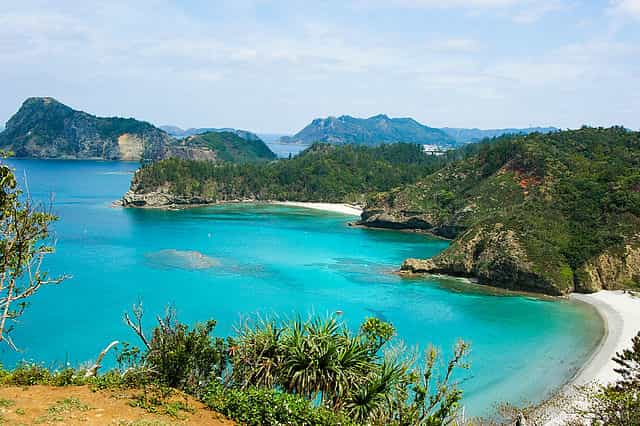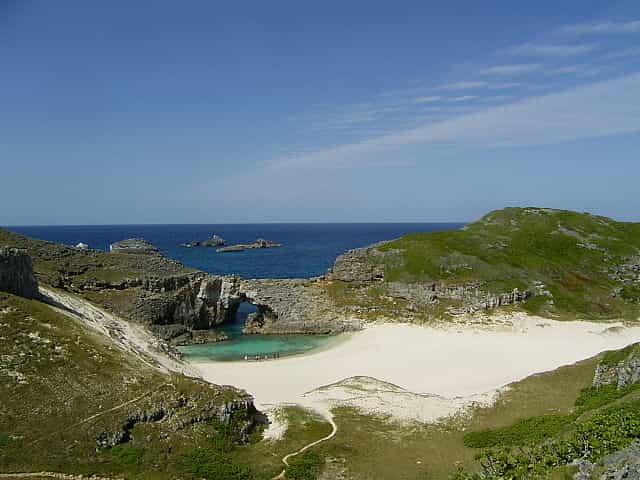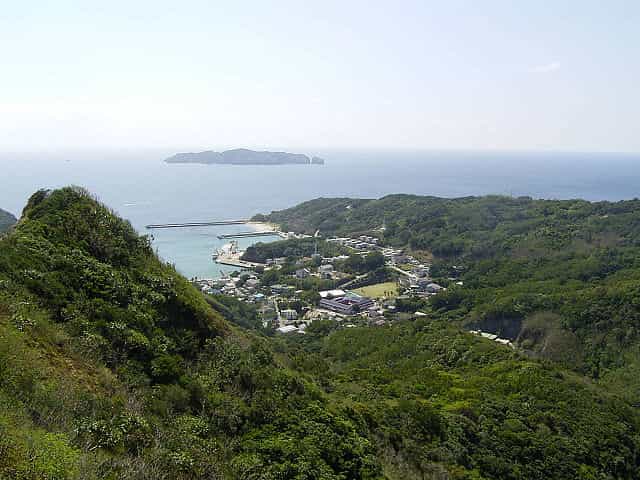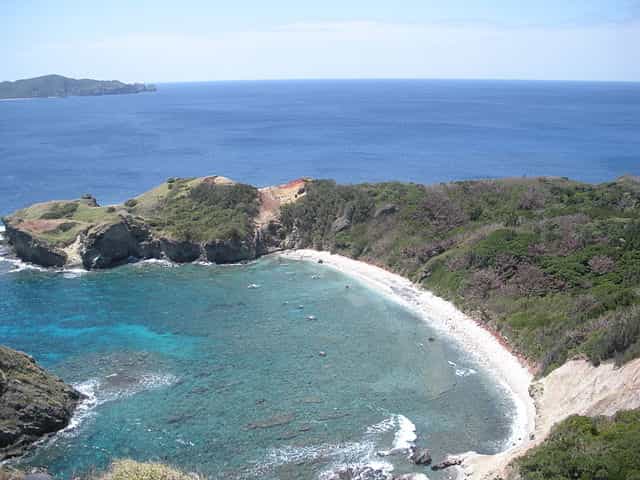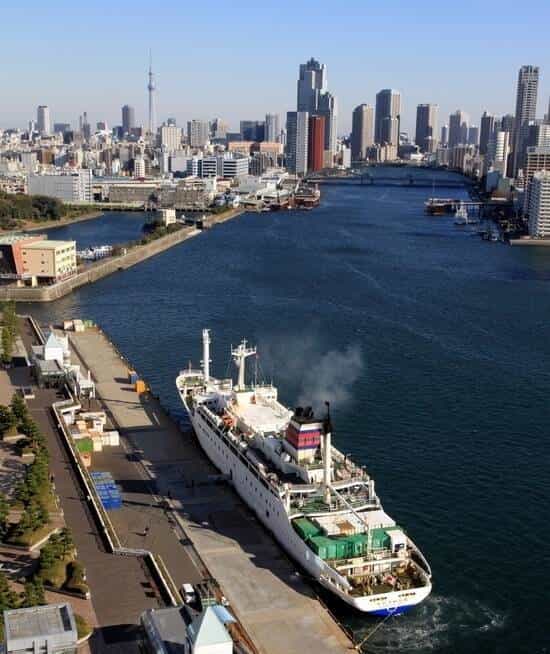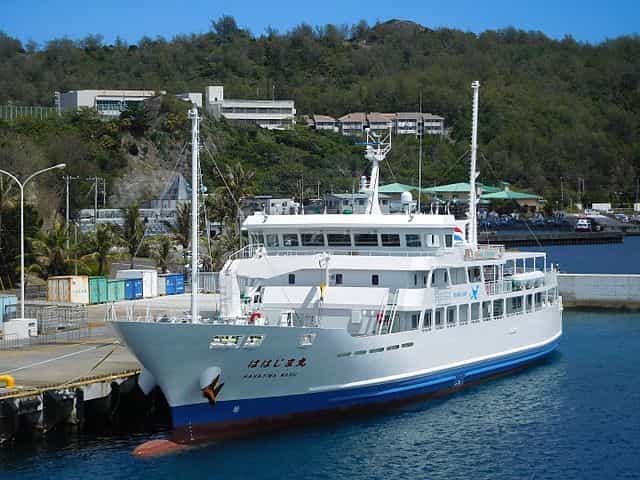|
The Ogasawara Islands, also known as Bonin Islands are a chain of over 30 subtropical Islands in the Pacific Ocean, administratively part of Tokyo but about 1000 kilometers away from the city.
The only inhabited Islands of the group are Chichijima "Father Island", the largest of the Islands and the seat of the municipal government, and Hahajima "Mother Island", which is the second largest among the group. The whole area forms a part of Ogasawara National Park, which is full of beautiful nature. Izu Islands can be a good quick getaway from Tokyo, but if you really want to get away from it all and have time to spare, Ogasawara Islands could be the place you are looking for. |
|
Cell phone coverage is limited to certain areas of Chichijima and Hahajima. Internet access is available in specific places like hotels, some shops and the Ogasawara Visitor Center on Chichijima Island.
Credit cards are accepted only by some of the shops and hotels. However, on both Islands you can withdraw cash from the postal ATMs found at the JA Bank branches. Although the access to these volcanic islands is limited to ship, it is always highly popular among tourists. |
|
The area is famous for its jungle covered hills, beautiful beaches, swimming with dolphins, whale watching, sea kayaking, snorkeling and coral reefs.
Because the Ogasawara Islands have never been connected to any continent, many of their animals and plants are unique and native to the Islands. This has led to the Islands' nomination as a World Natural Heritage Site on June 24, 2011. The best season to visit Ogasawara Islands for beach activities is from June to October when the air temperature normally reaches 25 degrees. If you plan to visit during July and August "tourist season", make sure you book accommodation well in advance. |
|
Futami Port in the north of Chichijima is where the ferries from Tokyo docks. Most of the restaurants and hotels on the Island are located in the village encircling the port.
On the main street look for B-Ship, a two story building with the large whale mural and a dolphin painted on it. It serves as the front desk of the Ogasawara Village Tourist Association and the Whale Watching Association. They can help you book a night’s accommodation, or arrange any activity you might want to do on the islands including surfing, fishing and scuba diving. The tourist association distributes a useful English guide map that lists the island's licensed guides. |
|
In order to protect the environment camping on any part of the Ogasawara Islands is forbidden. Visitors also must pay attention not to bring in any non-native seeds or species to the Island and avoid collecting any plant or harming any wildlife in general.
A public bus runs around Chichijima several times daily, connecting most points of interest. While Chichijima Taxi would chauffeur you anywhere on the island, other companies rent 50cc mopeds, large vans and passenger cars to drivers with a Japanese driver's license. Bicycles can be rented at many guest houses or used for free in some cases. |
|
One of the famous locations on Chichijima is Kominato Beach which is the largest stretch of beach on the island and is easily reached by car or bus; it’s about 8 minutes’ walk from the bus stop. There you can see a white sand beach and stunning limestone rock formations.
Sakaiura Beach with its calm waves is a six minute bus ride. The beach is only a three minute walk from the bus stop. Just off the beach you can see the partially visible wreck of the Japanese warship Hinko-maru, which sunk after it was torpedoed. Corals and fish have taken over the ship, making it a good snorkeling spot. |
|
There are several other stunningly beautiful beaches which you can easily reach using public transportation, some close and some far including; Miyanohama Beach, Tsurihama Beach, Hatsuneura Beach and Kopepe Beach.
Chichijima also offers a network of trails and observation spots throughout its mountainous area, offering views over the island and surrounding smaller islands. The viewing deck on top of Mount Chuo allows visitors to view the green mountains, the Futami Port, as well as the surrounding beaches with one sweep of the eye. |
|
If you like to watch a beautiful sunset, visit the Weather Station Observatory near Futami Port. If you are lucky you may spot humpback whales in winter.
The most famous spot in Ogasawara is Minamijima Island. There, you can see a very beautiful arch over a turquoise blue lagoon. From the heights of Minamijima Island you also will be able to see both Ginny Beach and John Beach on Chichijima Island. You can visit the Minamijima Island only if you are accompanied by a licensed local guide. To protect the island’s ecosystem only up to 100 visitors a day are allowed to visit the island, and may only stay for a maximum of two hours. The island is completely closed from November to February. |
|
Around 50 kilometers South of Chichijima is the much less developed Hahajima.
However, it shares the same climate and offers a lot of the same outdoor attractions. There is one road from the village of Kita Port at the north end of the island to the village of Oki Port at the southern end of the island, where the harbor is located. Oki Port is the arrival point of ferries from Chichijima. On certain days Hahajima Maru Ferry travels from Chichijima Island to Hahajima Island in the morning and returns in the afternoon. |
|
A road runs south from the Oki Port to the start of the Minamizaki Yuhodo, a hiking course that continues all the way to the peak of Mount Kofuji, an 86 meters peak with fantastic views in all directions.
Minamizaki Beach is located at the west of the mountain. It offers clear blue water which is an excellent place for snorkeling. The Mount Chibusa Course, leading up the highest peak in the Ogasawara Islands, standing 463 meters high, is full of highlights including former battle sites, huge banyan trees, and rare land snails and birds. Visit Ogasawara Village Office website for more information about the Islands. |
Ogasawara Islands AccessTransportation is limited to the Ogasawara Kaiun Ferry from Tokyo.
The Ogasawara-maru Ferry departs from Takeshiba Pier to Futami Port on Chichijima. Normally ferries depart from Tokyo once every six days. But, during the high seasons departures are increased to once every three days. It takes 24 hours one way in good weather, but longer if the sea is rough (and it often is). Takeshiba Pier is next to Takeshiba Station on the Yurikamome Line or a seven minutes' walk from Hamamatsucho Station on the Yamanote Line. The ferry ride is an adventure in itself. After departing Takeshiba Pier, you'll pass through the coastal area of Tokyo where you can see the Tokyo Skytree, Rainbow Bridge and Odaiba, and later on Haneda Airport, Yokohama, before passing Izu Islands and then continue your voyage through open seas. |
ReservationsOgamaru Package Tours prices include berth round trip fare between Tokyo and Chichijima, accommodation at inn/pension/hotel, meals (three breakfasts and three dinners).
Ogasawara-Maru tickets and hotel rooms get sold out around Golden Week holidays, summer vacation in July and August, and New Year holidays. If you are an independent traveler, make sure to have your reservation before going to Chichijima. Hotels can become full depending on the time of the year. |
Ogasawara Islands - Ogasawara Sub-prefecture, Tokyo
Sources
- Ogasawara Islands – Top
- Ogasawara Islands Map
- Futami Port
- Hahajima Island Viewed From Mount Kofuji
- Futami Port On Chichijima Island
- Swimming With Dolphins
- Kominato Beach
- Kominato Beach & Kopepe Beach
- Minamijima Island
- Hahajima Island - Oki Port
- Minamizaki Beach
- Ogasawara-maru At Takeshiba Pier - Tokyo
- Hahajima-maru At Port Of Chichijima Island

